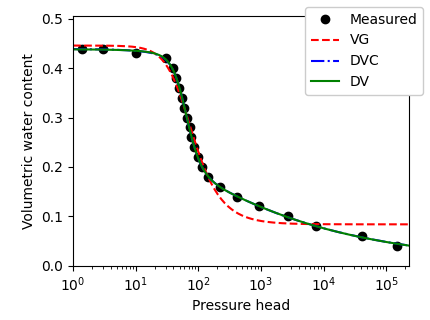unsatfit
Fitting functions of soil hydraulic properties
Sample code of unsatfit
Easiest way to start learnin g how to use unsatfit is to run sample codes as instructed in this page. You can optimize parameters of WRF (water retention function) and HCF (hydraulic conductivity function) of various available models to measured data set.


Use pdfgridcat for arranging multiple figures.